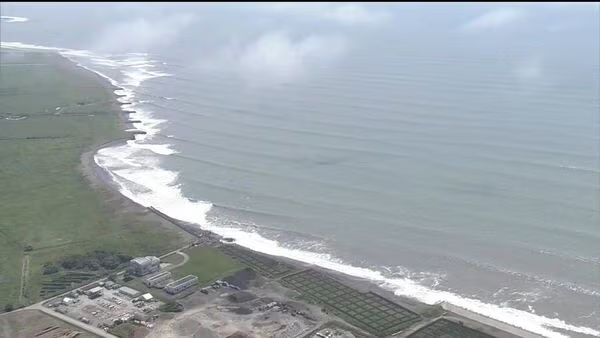A powerful series of events unfolded today as a massive undersea earthquake off Russia’s Kamchatka Peninsula triggered a tsunami, sending waves across the Pacific and prompting urgent safety measures. If you were wondering, “was there a tsunami today,” the answer is a resounding yes—today, July 30, 2025, saw the Pacific region on high alert as tsunami waves impacted several countries.
Tsunami Strikes After 8.8 Magnitude Earthquake in Russia
A colossal earthquake measuring 8.8 on the Richter scale struck near the Kamchatka Peninsula around 11:30 AM local time, marking one of the ten most powerful seismic events ever recorded. The shaking was so intense that it caused structural damage in cities like Petropavlovsk-Kamchatsky, with local officials confirming injuries and urging the evacuation of affected regions.
The quake’s immense undersea energy triggered tsunami alerts throughout multiple Pacific nations, including Japan, Hawaii, Russia, the United States West Coast, and more. Millions were advised to evacuate or seek higher ground as a precaution against potentially hazardous waves.
Key Points Summary — Rapid Facts for Today’s Tsunami
- A magnitude 8.8 earthquake hit Russia’s Kamchatka Peninsula this morning.
- Tsunami warnings and advisories were issued across the Pacific, affecting Japan, Hawaii, the US West Coast, and more.
- Tsunami waves reached heights of 3–4 meters (10–13 feet) near Kamchatka; Hawaii saw waves close to 5 feet; Japan recorded waves up to 1.3 meters in some areas.
- Evacuations took place in Japan, Hawaii, and Russia, with strong reminders to stay away from coasts.
- No major structural damage reported in Japan or Hawaii as of the latest updates.
- Transport disruptions in Japan, including ferry and airport closures, were reported.
- Japan and Hawaii have downgraded their warnings as immediate threats subsided, but advisories remain.
- One fatality reported in Japan during evacuations.
- More tsunami waves may continue for the next 24 hours, authorities warn.
How Each Region Was Impacted
Russia & Kamchatka
The epicenter, near Kamchatka, bore the brunt of the quake’s force. Tsunami waves up to 4 meters flooded parts of the Russian coast, damaging buildings and power grids. Local officials confirmed that evacuations and emergency services were in full swing, and at least one kindergarten suffered damage. The initial shock made it the most powerful earthquake in the world since 2011.
Japan
Japan’s Meteorological Agency issued tsunami warnings for its entire east coast, urging evacuation for nearly two million residents. The highest waves observed were 1.3 meters, resulting in temporary transport halts, such as ferry suspensions and airport closures. Although the earthquake was barely felt on land, evacuation was swift, with residents seeking shelter, especially in Hokkaido and other northern areas. No major property damages were reported, but unfortunately, there was one fatality in Mie Prefecture—a reminder of how quickly situations can turn during such events.
Hawaii
Hawaii’s authorities issued state-wide tsunami warnings, urging residents to move inland. Tsunami waves reached nearly 5 feet along some coastlines, causing minor flooding and leading to the opening of shelters. Thankfully, there were no significant injuries or damages, and the alert has since been downgraded to an advisory. Beachgoers and coastal dwellers, however, are cautioned to remain vigilant as further wave activity could follow.
Other Affected Areas
The tsunami threat extended across the Pacific, with warnings issued as far as Alaska, California, Chile, New Zealand, the Solomon Islands, and even parts of Southeast Asia. Several regions, including French Polynesia and Australia, braced for waves, but as of the latest reports, no major incidents outside the main impact zones have emerged.
What’s Next? Authorities Remain Cautious
Experts emphasize that tsunamis rarely strike with a single wave—successive surges can occur over several hours. Coastal communities are strongly advised to stay away from the sea and heed official guidance, as the risk may persist for up to a day. Both the Pacific Tsunami Warning Center and local government agencies are monitoring developments and will provide updates as needed.
Final Thoughts
If you experienced effects or have local updates, feel free to share your story in the comments below. Stay tuned for rapid developments, and don’t take unnecessary risks near the coastline until all-clear notifications are issued.
Disclaimer: The information above is sourced from verified platforms and official news agencies. We are not responsible for damages, decisions, or any actions taken based on the information provided. Always follow local emergency guidance and advisories.
